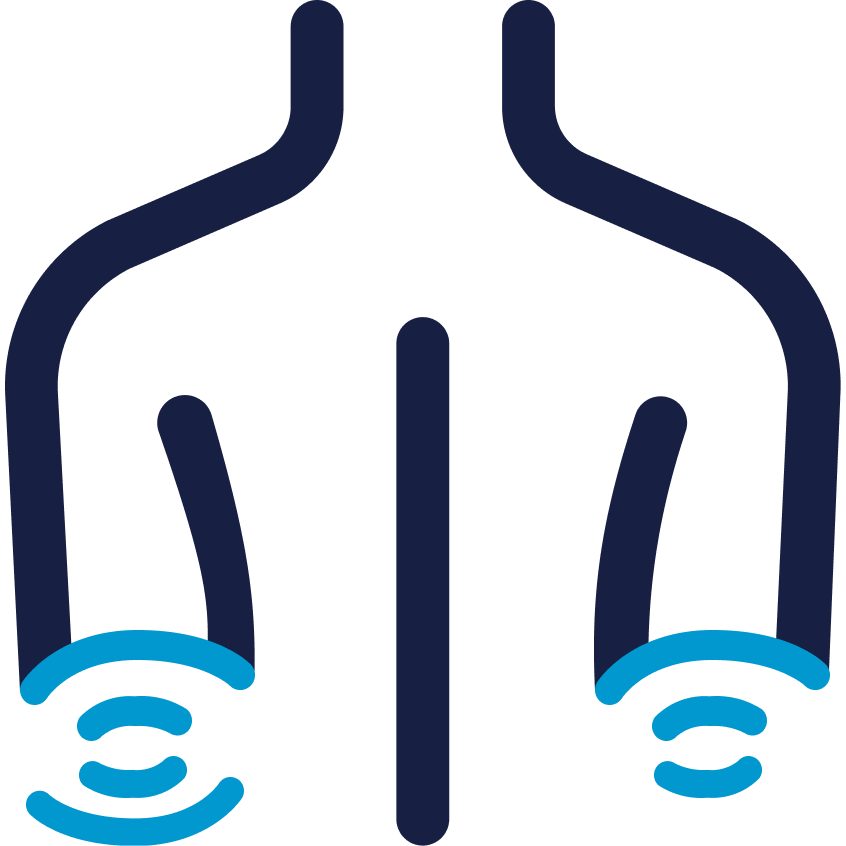
- Common Conditions
- /Elbow

Cubital Tunnel Syndrome (CTS) is a compressive neuropathy of the ulnar nerve at the point behind the inside of the elbow where the nerve travels through the cubital tunnel. A compressive neuropathy is a progressive injury to a nerve caused by constant, unrelenting pressure; as the condition progresses, the outer covering of the nerve, which is called the myelin sheath, is injured due to a lack of blood flow. Small nerve fibers, those that conduct light touch and temperature, are affected first. Larger fibers, like those that conduct impulses to muscles, are affected later with chronic progression of the injury.
The most common presenting symptoms of cubital tunnel syndrome are numbness and tingling in the digits innervated by the ulnar nerve. These may be especially present at night time, often waking the sufferer up from sleep. Some people also complain of weakness, loss of dexterity, and a problem with consistently dropping objects. Fine motor activities of the hand are also affected because the ulnar nerve controls all the small muscles of the hand. This can make typing and writing very difficult.
Cubital tunnel syndrome is often related to elbow position; to that end, sleeping with the elbow bent is the most likely culprit. Prolonged elbow flexion while typing or driving can also worsen symptoms. Like carpal tunnel syndrome, cubital tunnel syndrome often gets worse as individuals age and soft tissues become less compliant and less able to tolerate compression. Furthermore, people with diabetes, thyroid disorders, and obesity are more prone to compressive neuropathies. Finally, an estimated 10% of the population has a naturally subluxing ulnar nerve, which can be exacerbated by rapid elbow movements—like lifting weights, baseball, tennis—and this can cause symptom progression as well.
Mild cubital tunnel syndrome is treated with nighttime splinting and periodic reassessment to ensure there is no progression. The most reliable splint is an elbow pad or even a children’s knee pad worn backward so that the pad is anterior to the elbow. Either of these times, when worn while sleeping, can often relieve symptoms in mild compression on their own. However, in some cases, workplace and activity modification may also be required. Moderate and severe ulnar neuropathy is usually relegated to surgical treatment. One recent study done at Harvard demonstrated that severe ulnar neuropathy did improve with surgical treatment, but not to ultimately to normal levels. Therefore, surgical treatment before progression to severe disease is paramount. We treat patients surgically by releasing the nerve and placing it anterior to the elbow, allowing the nerve to be unaffected by the elbow position. Following surgery, patients are treated in a posterior elbow splint for two weeks. From week two to four they are relegated to limited activities but are encouraged to progress to activities as tolerated by four weeks post-op.


https://www.asht.org/sites/default/files/docs/2018/Cubital%20Tunnel%20Syndrome%202018.pdf
https://www.assh.org/handcare/condition/cubital-tunnel-syndrome

